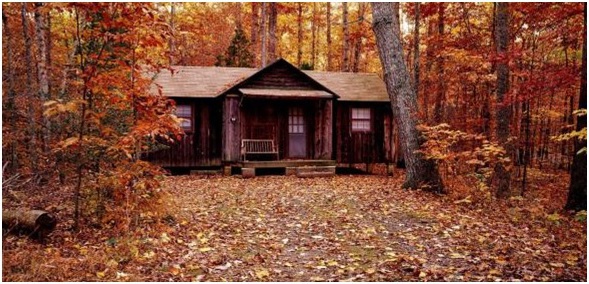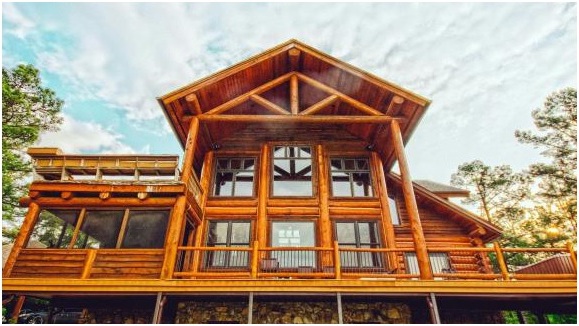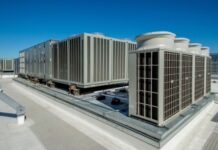No matter if you plan to build your log cabin as either your primary residence or vacation property, many details must be considered before beginning construction. At the same time river cabins nsw and other such places can be a great option to consider in this run of making a luxurious place for your fun. But it is very important to invest carefully before you choose for any type of custom log cabin. One should have a great idea about the custom log cabin before proceeding to build the one. From foundation to roofing styles, there are various choices available to you when planning this venture.
Foundation planning is the first step in building a custom log cabin. There are two primary foundation types: concrete slabs and piers.
Cost
As you plan your dream log cabin, you may be wondering how much it will cost.
The answer depends on many factors such as construction method and features as well as land costs, utility costs, and septic system expenses that could quickly add up and stretch your budget considerably.
Building a custom-designed log home will cost around $90-$150 per square foot; this is more expensive than conventional homebuilding but well worth it for quality materials and craftsmanship.
Keep in mind that the cost of a log cabin will depend on its materials, with eastern white pine, cypress, and cedar being among the most commonly used varieties; their costs often fluctuate with supply and demand. Additionally, its price can also depend on factors like weather and location.
An important cost consideration in building a log home is how much will be needed to prepare the site for construction, such as clearing and excavation costs. Land clearing typically runs around $3,200 per acre while excavation expenses can often surpass this figure. Furthermore, installation of septic and well systems can easily top $100,000+! You can visit this site to learn more about installing septic systems.
Assuming your property does not already offer these utilities, expect to spend considerable money installing them yourself. This may involve renting equipment to dig trenches and lay pipes – it is wise to account for this cost early on to prevent surprises later.
Interior finishing products and interior finishing services will cost money as well. It is wise to select a company that will give an estimate of the total project cost; log homes require regular upkeep so take note of this additional expense.
Design
Log homes feature an inviting aesthetic that brings back memories of simpler times when life was more peaceful and outdoor activities were commonplace.
Today’s log cabins come in various styles and sizes to suit any lifestyle; constructed using natural materials that offer unsurpassed beauty and durability as well as energy savings while requiring less maintenance than other house types.
Locating your home correctly is one of the key components of its design. These custom log cabin homes are best suited for natural environments. Make sure you choose a spot with access to nature and an excellent view while considering factors like sunlight and drainage; this will prevent moisture issues that could damage logs over time.
Another factor is deciding between full-scribe log homes or chink style cabins as your chosen construction method. Full-scribe logs are cut specifically to fit together tightly without insulation; this method of building may be costly, yet durable while still giving a traditional appearance.
Chink log homes feature smaller logs that don’t span as wide, are usually insulated to reduce energy loss and cost less to build than a full scribe. Furthermore, these tend to settle less over time.
Hybrid log homes or timber frame log houses may also be suitable options. A hybrid log house resembles regular houses in design with walls made up of timber framing material with some logs added for aesthetic value; timber frame log houses feature more substantial construction. Both types can be built anywhere.
Materials
Log cabins offer plenty of character and are an attractive living solution in nature, yet building one requires extensive planning, time, and material costs – this is why many opt for pre-built log cabins as they save both time and costs in creating their dream home from scratch.
When choosing the spot for your cabin, take into account its type of soil, zoning laws, and future development plans as well as proximity to utilities like power and plumbing. In addition, consider climate conditions – some species of trees are better equipped to withstand winter than others.
Next, choose the style of log cabin you would like to build. There are various choices, ranging from traditional to contemporary; each requires different materials. If unsure, seek advice from a professional as they’ll be able to assist in choosing an optimal material and the construction process itself.
Once you’ve selected your design, the next step should be constructing the walls. To do so, sill logs must be laid with notched notches – therefore learning about different notching techniques could prove useful.
Once the walls are constructed, you can begin creating door and window openings using lintel logs and tacking cleats. You can click the link: https://www.angi.com/articles/what-is-a-lintel.htm to learn more. Crafting these logs may seem complex at first, but once you understand their basics they become far easier to work with.
Once your cabin is completed, it must be protected with stain designed specifically for log homes. This will seal off its logs from moisture intrusion while caulk or chinking designed specifically for log homes can ensure no gaps or cracks allow air into it.
Time
Log cabins provide an exciting alternative to traditional houses. Their rustic aesthetic appeals to outdoor enthusiasts while being eco-friendly and energy efficient despite its rustic exterior.
Though these projects may appear straightforward at first, their construction requires careful planning, attention to detail, and time – up to an entire year may pass between stages!
Building a custom log cabin takes time, so each step must be given careful thought and planning.
Once you own land, construction must commence. Timing for this phase depends on whether you build it yourself or hire an outside company.
After your log cabin is built, the final step will be shingling its roof. Choose either roofing felt for quick and easy installation or wood shingles which take more time but once complete can provide years of enjoyment! Once done, your log cabin is ready to welcome its first resident.





















